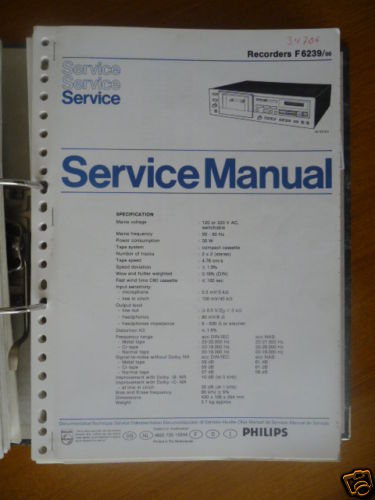Theo Verelst Local Diary Page 87
I've ditched the usual header for the
moment, I think it doesn't help much anyhow.
This page is copyrighted by me, and may be read and transferred by any
means only as a whole and including the references to me. I
guess that's normal, the writer can chose that of course, maybe
Ill make some creative commons stuff one day, of course I have
made Free and Open Source software and even hardware designs available!
This
page is under construction, so check back later, too.
Nov 24, 02:38, 2009
T
richard cohn
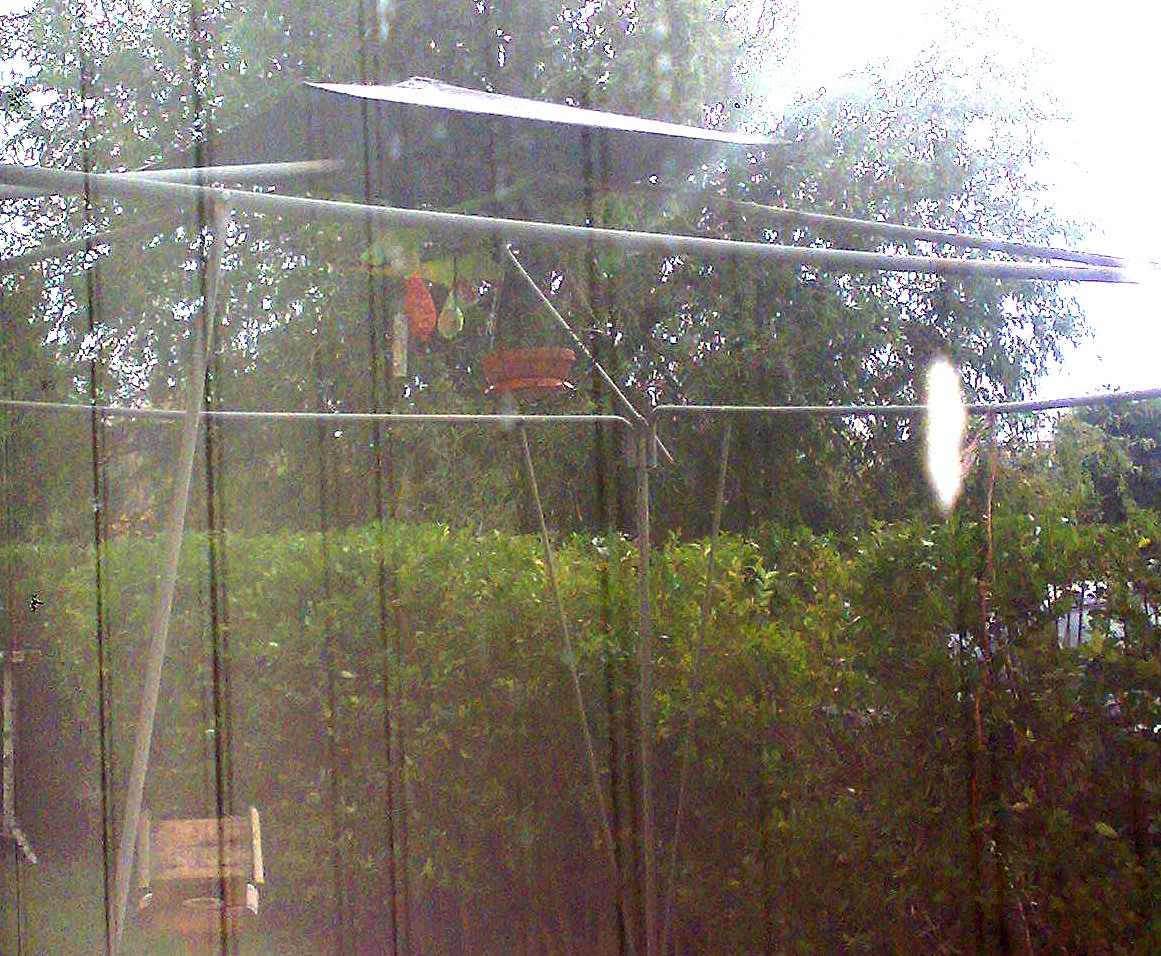
Wild (?) Parots!
The Kurzweil Supremacy

at idfa
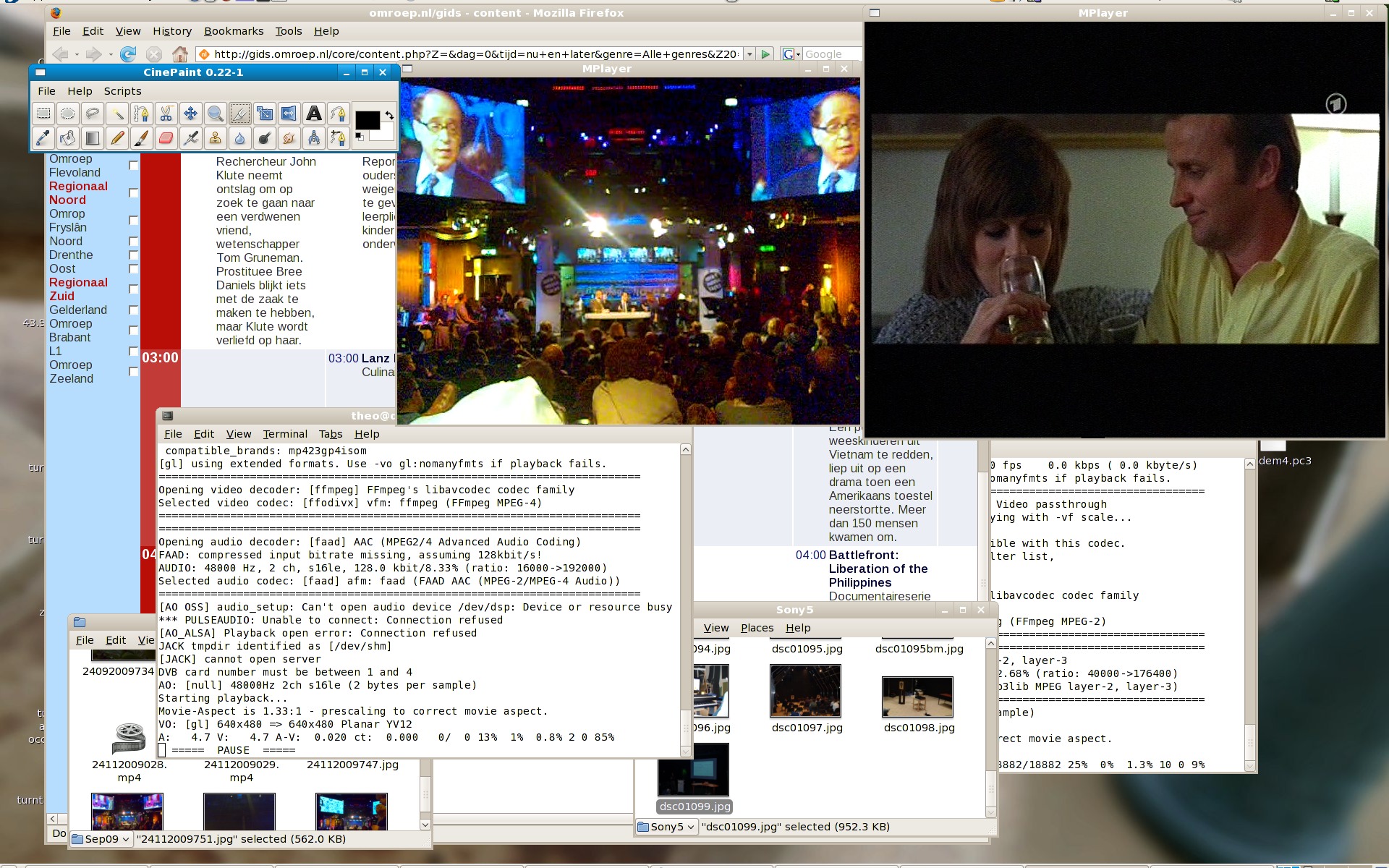
I was at the international premiere of "Transcendent Man" at the
International Documentary Festival Amsterdam, and I was in the audience
of a TV interview with Ray himself, and used the phonecam a bit:
vid1 (short)
vid2
No VDpau video renderer, but openGL based with filters, and a
deinterlacer in software showing a end 50s film on a german channel,
and a recording (in high, comparable bitrate as the live network
encoded version, way over 10Mb/s) of a dutch channel showing
´Magnum Force´:
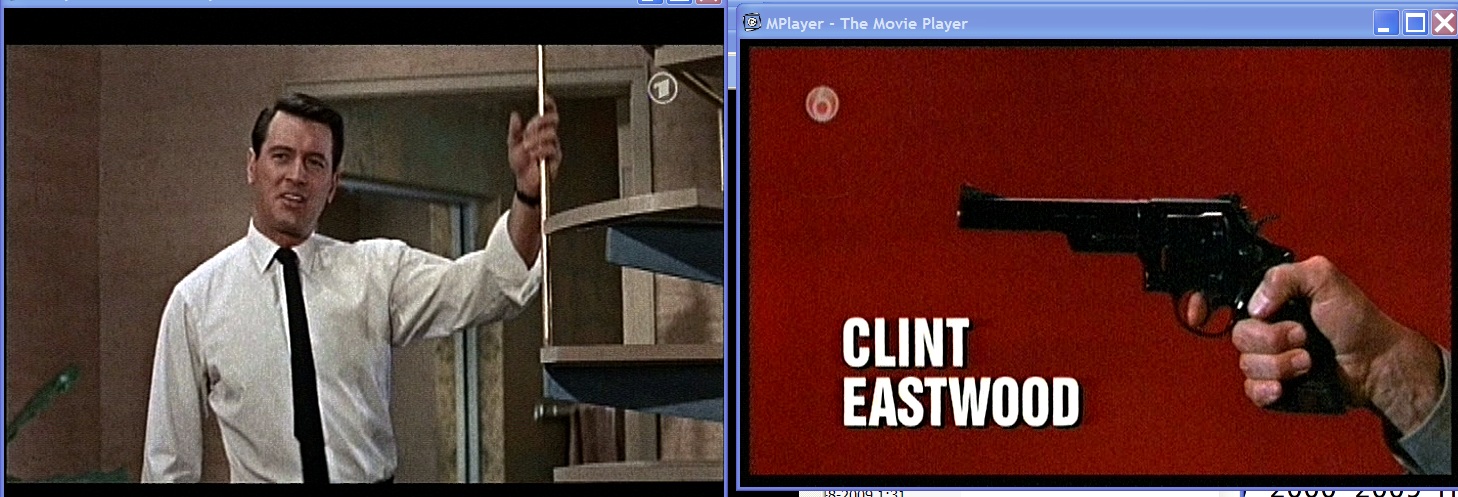
Interesting colours and use of image processing.
The surround video watching audio channels in the lower right corner
shown using the patchage program which automatically graphs Jack
connections:
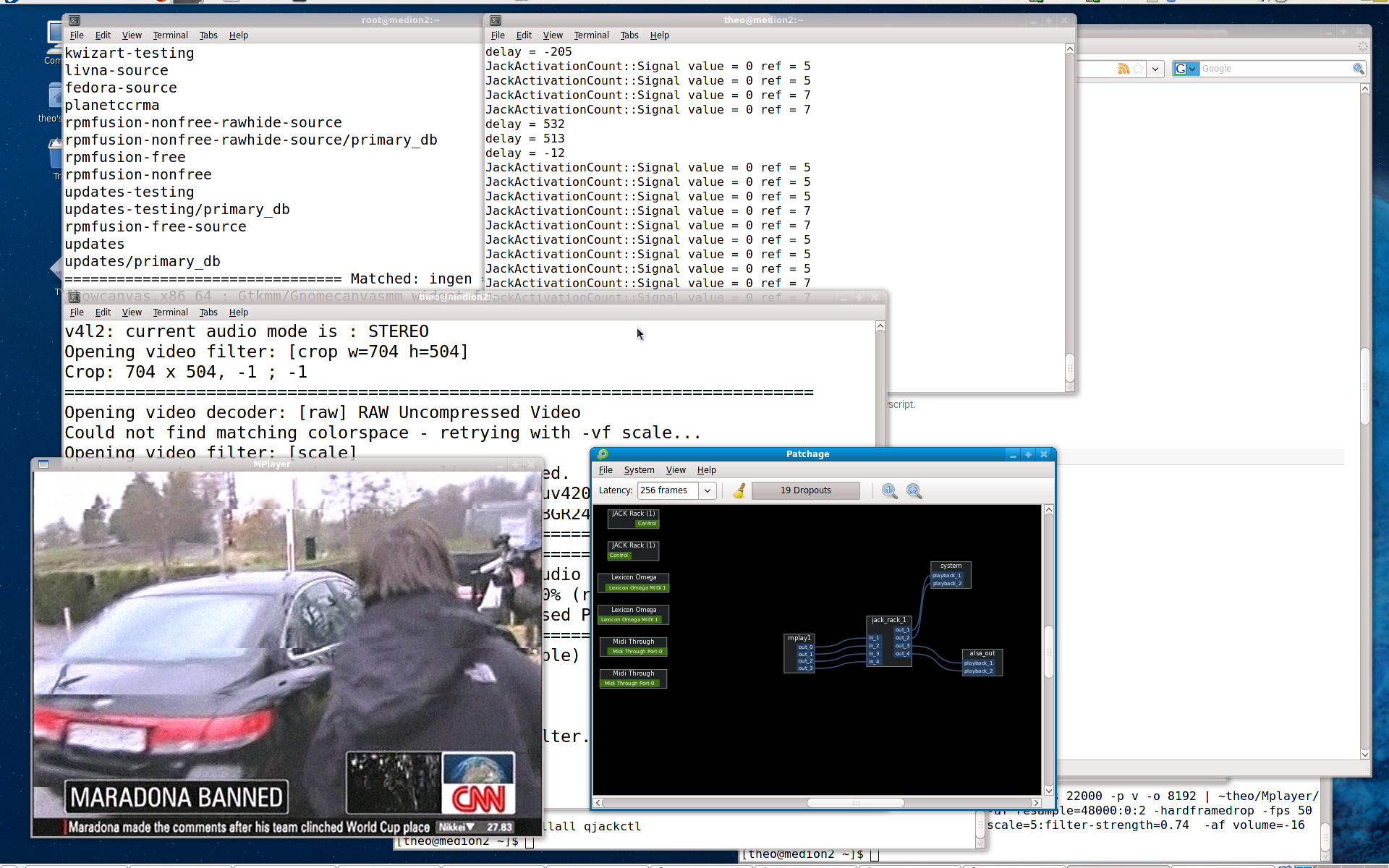
Luxurious TV watching:
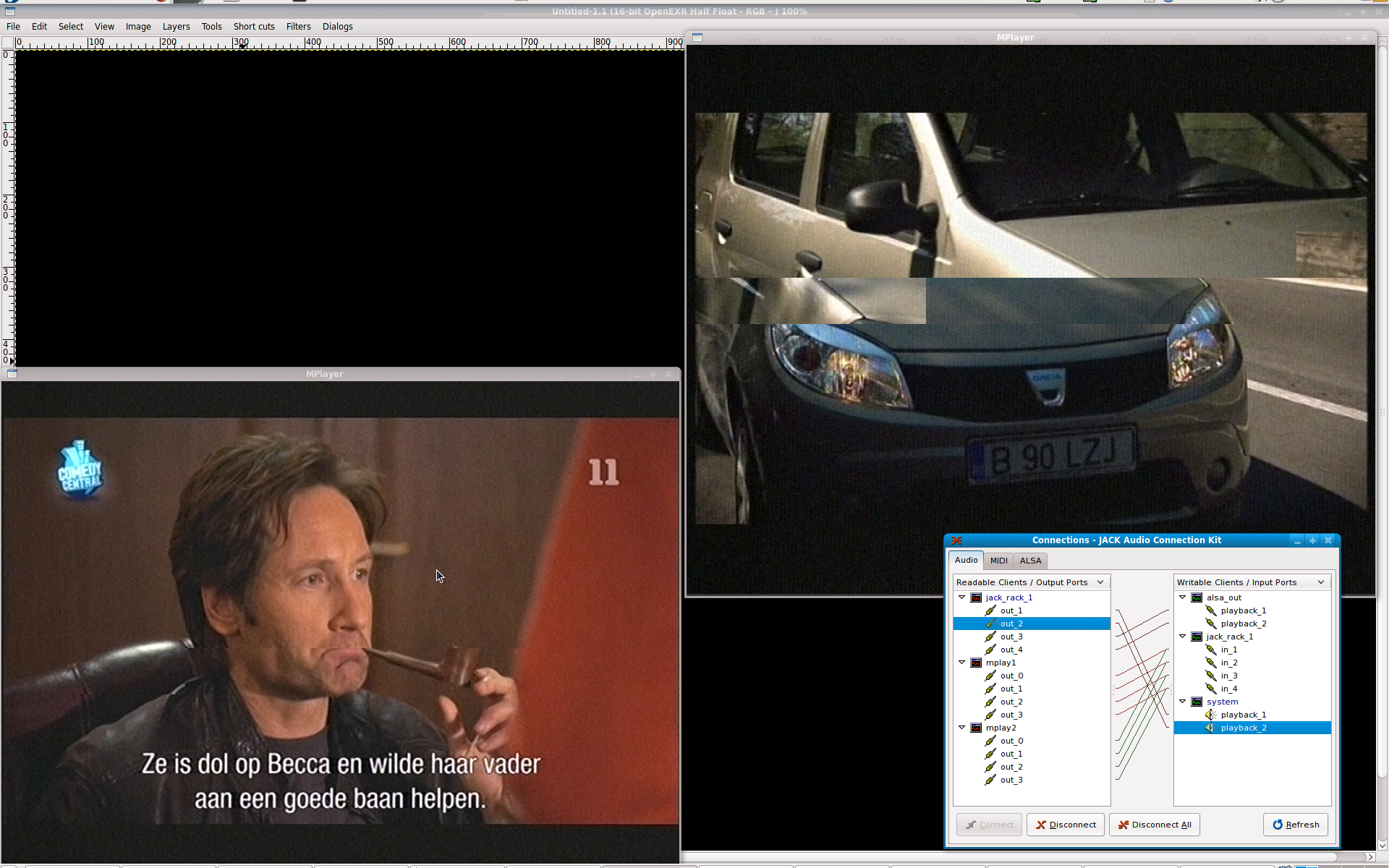
Two channels with different renderers simulateously, pretty much
without error, both doing surround sound, and both enhanced by the
surroud reverb on top of that...
This is an impression of the quality from a test reel from the Red One
camera company, except it looks better when expanded to 1080HD
(it´s progressive 720):
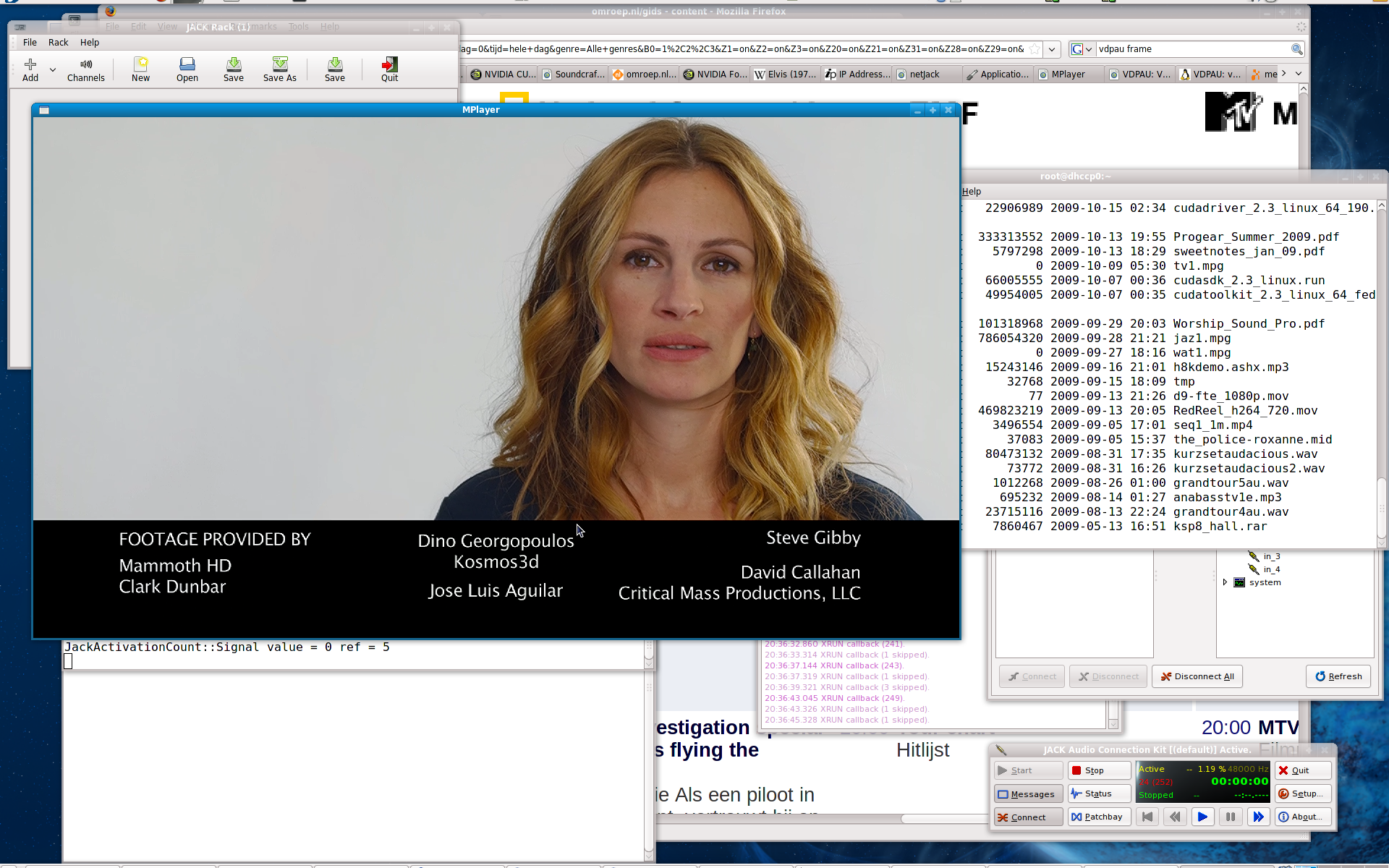
No fair competition for the Sony HD cam I use? Well, in certain ways
not (actual 24 fps, many bits per pixel, gross pixel count, quality of
the optics in various film senses (including size and wide angle
options) maybe (hopefully) linearity and large light sensitivity range,
no compression during record, etc.) but I don´t think the Sony
(being one of the first HD cams, at the time costing about 1200 euros,
whereas the Red Ones are already cheap at a couple of 10k$ and lenzes
cost probably various Sonys together a piece) is bad in general, in
fact quite some things it does fairly crafty and neutral.
This is how I tested wether 24 bits flow into and come out of the
Lexicon effect unit:
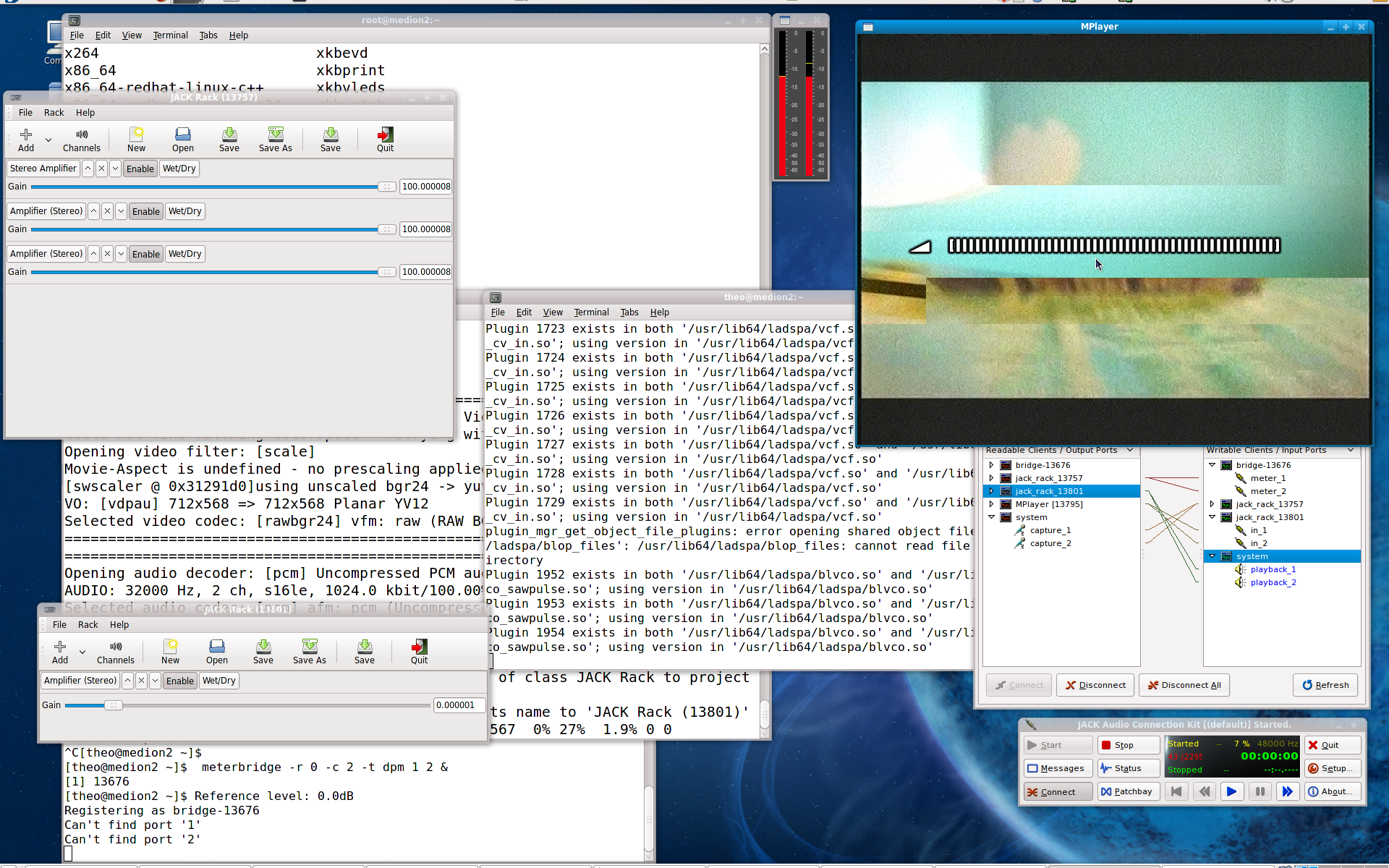
very small digital numbers as input, and measuring the amplified inout
back to the computer, with the unit in the TOS digital audio loop.
Another ´monitor´ producer trying to make studio usable
monitors clearly didn´t get through the dsp woods without trouble
(or great succes):
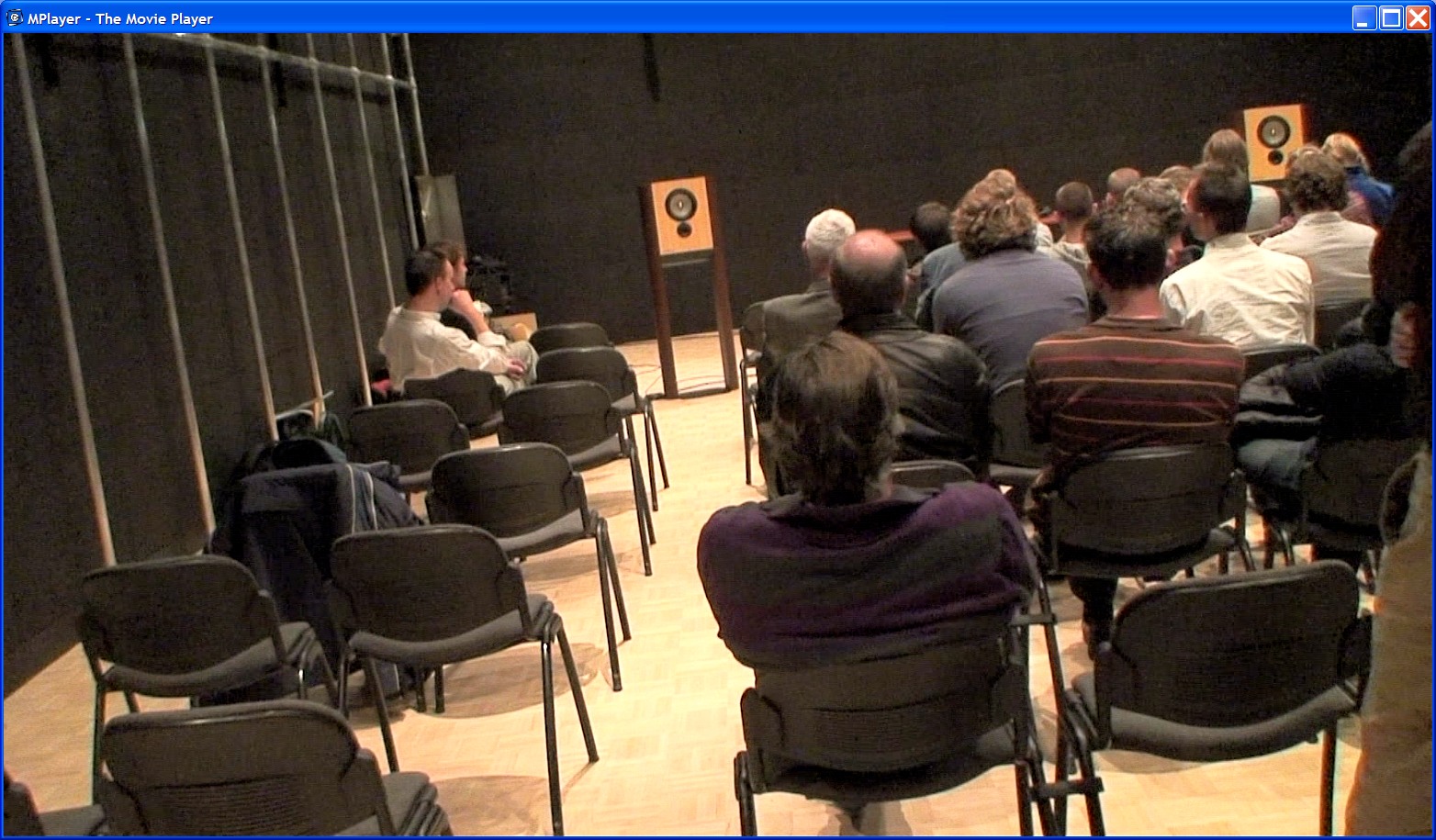
an aes evening spent on clearly not straight speakers because of the
incorrect holy grail of using impulse based speaker corrections without
knowing dsp and mathematical and ee theory well enough, gives a
particularly uneasifying sound probably suitable for a new age type of
cathedral, but not even for hifi lovers I think. I also don´t
think objective measurments would confirm the neutrality as much as
could be hoped for (like frequency straightness and radiation pattern
shapes).
Mr Cohn about compositorical subjects:
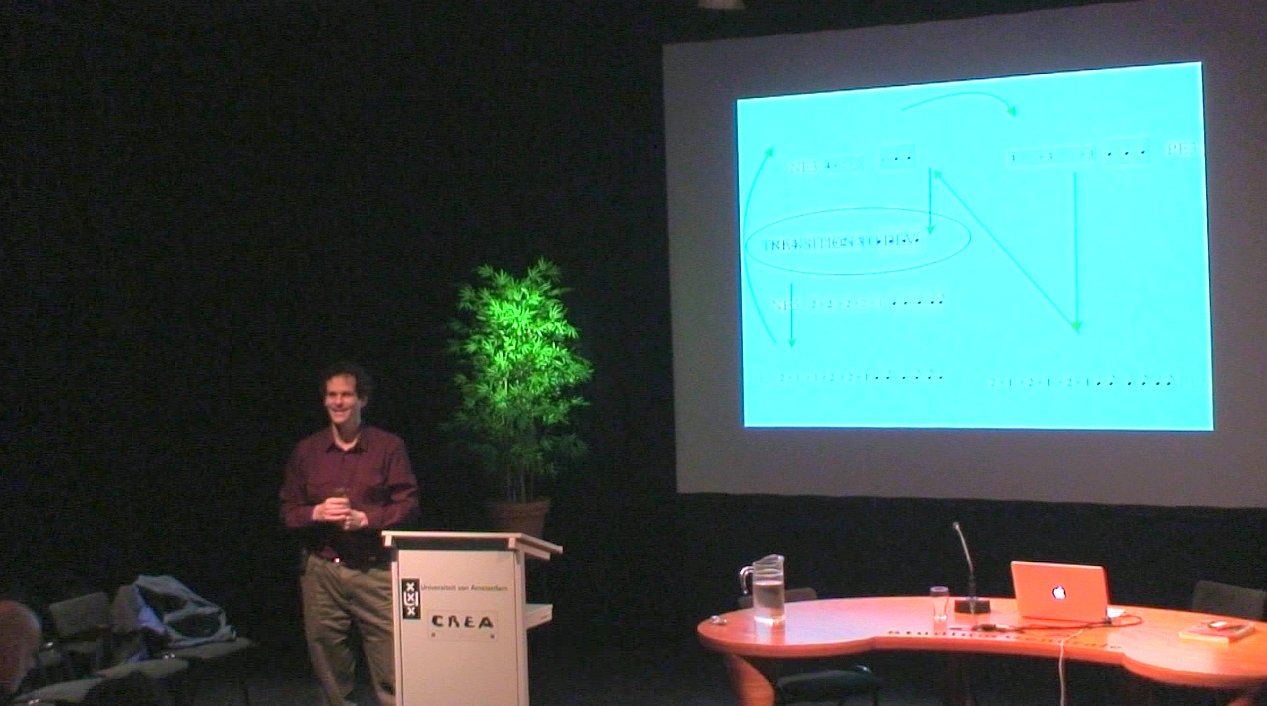
Amplifiers I had or used
(Pictures of similar equipment I found on the web.)
This one is from Kontakt in the Hague, probably 68/69, which years
later I inherited from my dad:
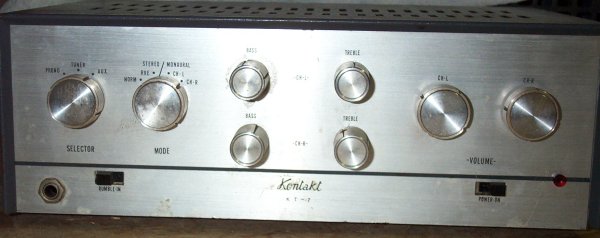
2x4 watt tube power, warmup time, playing hours must have been hours a
day for years at least, very reliable, not too loud, nice but not too
neutral sound. Lots of controls, seperate stereo channels.
This one was in the living room at mty parents house after I got the
above (not mine), for many years:
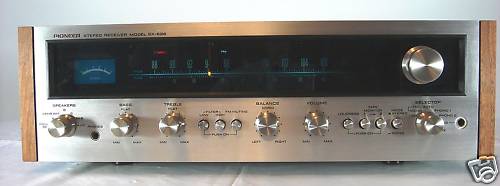
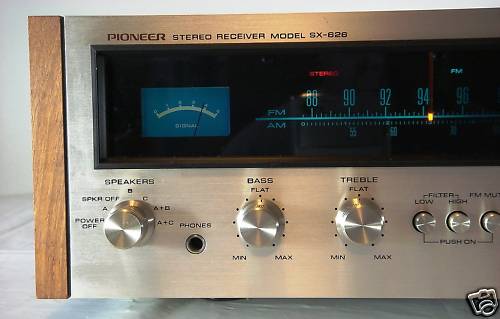
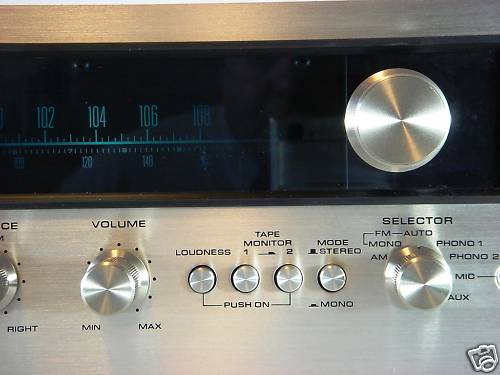
When I had my own room and laer house, I used this amp for hifi use
(playing cds, radio), musical instruments and studio type of use, and
for watching TV (for the sound), a Kenwood I got at good price
(300 guilders IIRC) I suppose in about 1989:
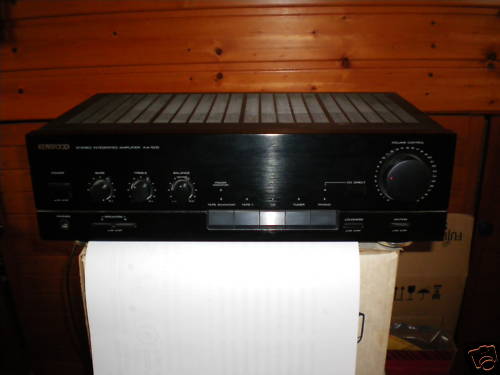
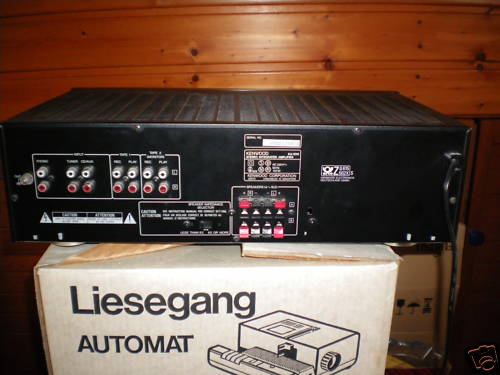

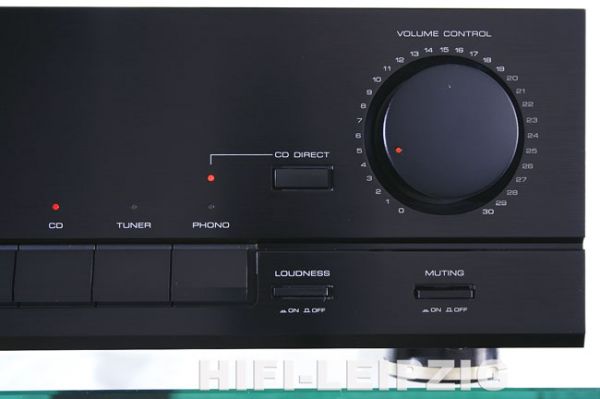
Quite good specs, and definitively loud, never needed more power in
smallish spaces. Great enough neutral sound for the time.
Finally pictures of my old cassette deck!
I found some:
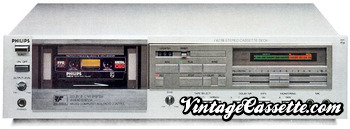
I bought it using a part of my first (I think) vacation job money, as a
coincidence (there was an interesting sale of this dicontinued
machine), probably summer ´84, and it was amoung the best decks
around at the time, later on only approached (improved ?) by the well
known Aiwa machines, and 3 head, so it was possible to during record
hear back what was on tape:
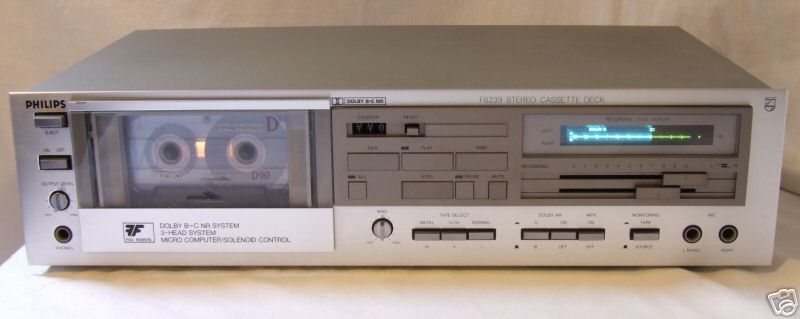
Tip-touch solenoid control, too, which was neat, and all the good
facolities, fast meters, bias control (tape type fine adjustment, very
important for neutral recordings), Dolby C (and B) for about CD quality
dynamic range, and the sound was actually quite good, especially I was
totally fond of Metal tape recordings (I had one TDK MA-R 60 for master
recordings) with dolby B (or C, depending on the material, B was even
more neutral in principle, and the dynamic range of metal already quite
a bit better), where the difference (using the monitor button) between
1/10th of a second recorded sound and the direct sound was really close
to indistinguishable, so a CD would sound actually the same in practice
as it´s cassette recording. Quite a feat that was.
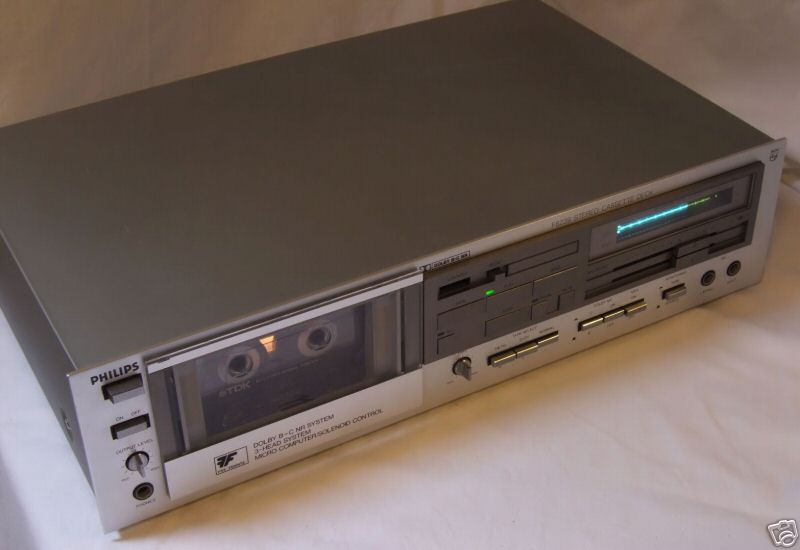

3 heads!
I might have had this too:
